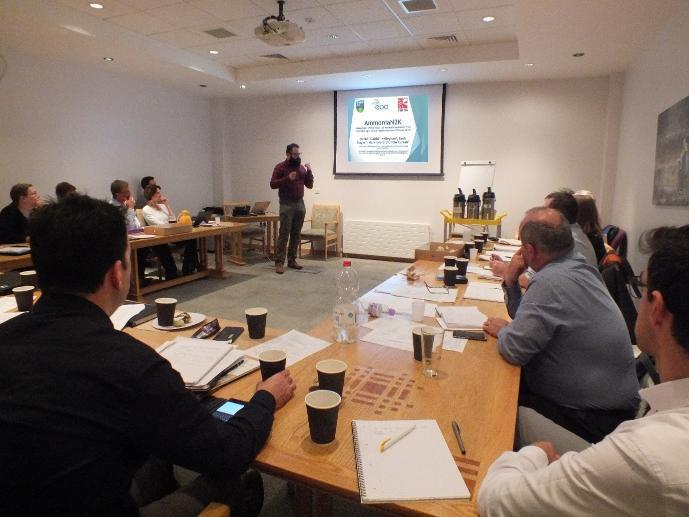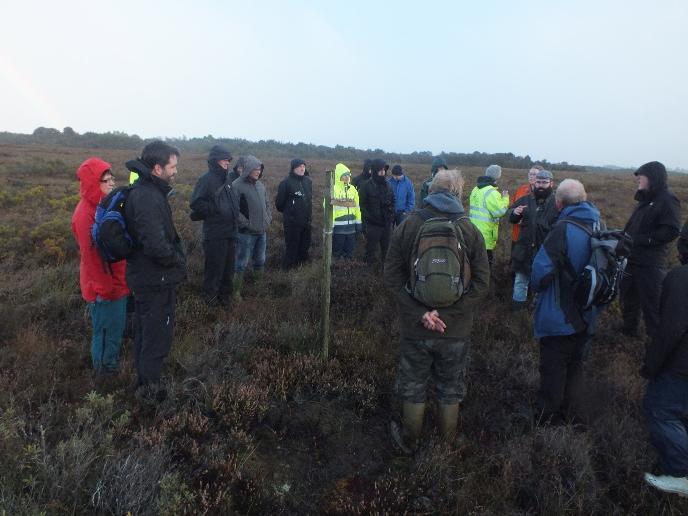UCD SBFE Researchers attend Interagency Meeting
News and Events
- SBFE research fellow Xiaohui Lin receives the MSCA DOROTHY COFUND award
- Upskill with UCD’s engineering micro-credentials
- Minister O’Donovan announces funding boost for early career researchers
- Recent Lab visit by UCD Engineering & Architecture to Sheffield University Diamond Centre
- UCD Stormwater Runoff Research featured in Nicola Haines Team
- Madeleine Lowery among UCD Researchers recognised in SFI Frontiers for the Future Awards
- UCD’s LaNua Medical Wins Big Ideas Award at Enterprise Ireland’s Start-Up Day 2024
- Robotics Competition
- Congratulations to All the Winners of this years NovaUCD Awards
- Irish National Doctoral Research Cohort on Floating Offshore Wind Dynamic Cables is formed
- UCD and Northeastern University extend and deepen long-standing partnership with five collaborative research projects
- EPA announces €14.3M in new research funding
- Arup Scholarship Awards 2024
- UCD names new Vice-President for Equality, Diversity and Inclusion
- Project promoting safe staffing in the healthcare system wins UCD Research Impact Competition
- VOICE Project Launches to Shape Tomorrow's Sustainability
- 2023 News Archive
- 2022 News Archive
- 2021 News Archive
- 2020 News Archive
- 2019 News Archive
- 2018 News Archive
- 2017 News Archive
- 2016 News Archive
- UCD and Origin Enterprises team-up for Strategic Research Partnership
- Launch of new UCD Hyperspectral Imaging
- UCD Researcher featured in Soil Science Society
- School Partners in ESPON project spatial planning & governance
- UCD SBFE Researchers attend Interagency Meeting
- Harvesting Knowledge from Big Data in Agriculture
- Site visit to UCD Chinese Temple
- Science Foundation Ireland funding
- UCD SBFE hosted 10th International Conference on LCA
- UCD Agricultural Systems Technology course features on
- Associate Professor Aoife Gowen contributes to Science
- UCD graduates win RIBA International
- Prof Nick Holden invited to give plenary presentation
- Achievement of Excellence Student
- UCD Architecture Alumni
- Da-Wen Sun New President
- Real or Artificial Trees
- Awards for School APEP Research
- UCD SBFE Professors named highly cited researchers by Thomson
- UCD-TRUSS ITN at Willow Park Junior School in Science Week
- 5th UK & Ireland FOAM/OpenFOAM
- New Microneedle Platform Technology
- Prof. Sheridan elected a fellow of the Optical Society
- New EPA funded Eco-Plan Reports
- European Biotech SME award
- Prof. Thomas Brazil elected President of the IEEE MTT
- UCD leads €6m Horizon 2020 project to improve air quality
- UCD School of Biosystems and Food Engineering Welcome
- Planning Futures
- Student Awards 2016
- UCD Spin-Out Company, APC, named Irish Pharma Company of the Year
- PSE Model-Based Innovation Prize 2016
- Celebrating 60 Years of UCD Chemical & Bioprocess Engineering
- UCD honours exceptional role model for women in engineering
- Intel partners with UCD to sponsor Masters Students
- NovoGrid Shortlisted
- Fengzhou Fang
- Building the State
- A Centenary Celebration
UCD School of Biosystems and Food Engineering Researchers attend Interagency Meeting “Ammonia and Natura 2000” in Belfast
Nitrogen deposition, particularly ammonia, represents a significant pressure to sensitive semi-natural habitats in the UK and Ireland. Decisions for permitting installations releasing ammonia are made in the context of high background levels that are often already exceeding environmental benchmarks.
The Irish Environmental Protection Agency (EPA) is funding the “AmmoniaN2K” research project, which is led by UCD School of Biosystems and Food Engineering in partnership with the University of West of England (UWE). The study will quantify and assess the impact of ammonia emissions from intensive pig and poultry units on Natura 2000 sites in Ireland.
Many of the issues faced by the Irish EPA and covered by this research project are shared by UK statutory nature conservation bodies and pollution regulators. These agencies have also been undertaking research to improve their assessment approaches and to look at remedies for tackling ammonia impacts. In some cases, for example Northern Ireland, a large expansion of the poultry industry is bringing additional challenges for permitting and protecting Natura 2000 sites and Areas/Sites of Special Scientific Interest.

UCD School of Biosystems & Food Engineering PhD student David “Dáithí” Kelleghan addressing the group in relation to the AmmoniaN2K project.
The focus of the interagency meeting, held in Belfast on the 17th and 18th of October 2016, was to encourage a conversation between different state bodies and stakeholders from the Republic of Ireland, Northern Ireland, Scotland, Wales and England. Researchers from the AmmoniaN2K project, in addition to steering committee members, were invited to attend and discuss their work. The research conducted by David Kelleghan, Dr. Tom Curran (UCD) and Dr. Enda Hayes (UWE) on ammonia emissions from pig and poultry houses in Ireland was the focus of the afternoon discussions, in addition to building detailed atmospheric dispersion models from which a national ecological assessment could be conducted.

Excursion to bog downwind of intensive pig and poultry house In Derry where passive ammonia sampling is being conducted.
The meeting was attended by: David “Dáithí” Kelleghan, Tom Curran (University College Dublin), Pat Byrne, Ciara Maxwell, John McEntagart (Environmental Protection Agency, Republic of Ireland), Andy Bleasdale, Barry O’Donoghue (National Parks and Wildlife Service, Republic of Ireland), David Dodd (Department of Communications, Climate Action and Environment, Republic of Ireland), William Burchill (Teagasc, Republic of Ireland), Claire Whitfield (Joint Nature Conservation Committee), Susan Zappala (Natural England), Simon Bareham, Khalid Aazem, Jeremy Walters (Natural Resources Wales), Claire Campbell (Scottish Environment Protection Agency), Mike Shepard (Scottish Natural Heritage), Paul Corbett (Department of the Environment, Northern Ireland), Sara McGuckin , Keith Finegan, Barry McAuley, David Bruce, Charlotte Stewart (Department of Agriculture, Environment and Rural Affairs, Northern Ireland).
Further information of the AmmoniaN2K project is available here
The project can also be followed on Twitter (opens in a new window)here